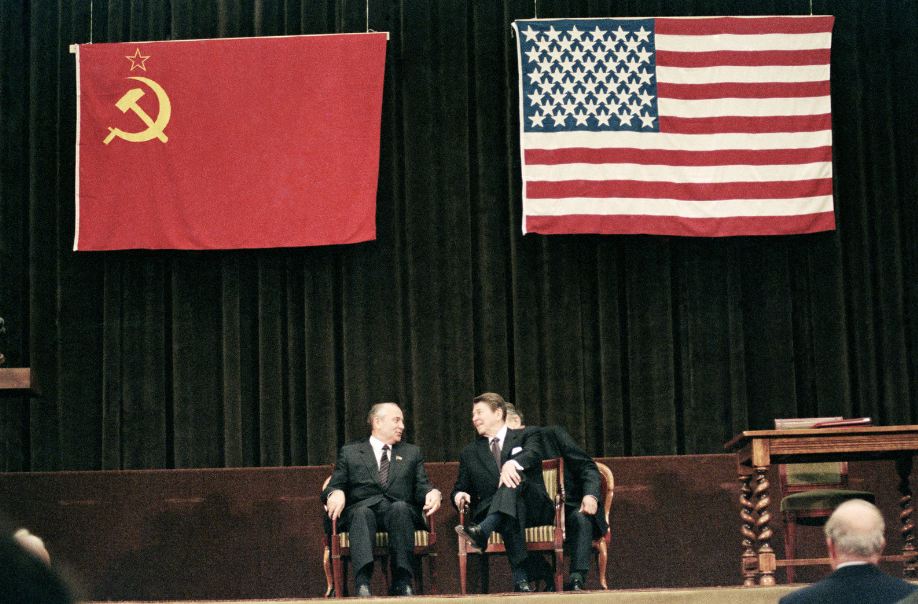A summit between the Soviet Union and the United States leaders was held. Mikhail Gorbachev and Ronald Reagan come face to face in Geneva but reached no ground-breaking agreements. On the other hand, the encounter appeared to promise well for the future, as the two men engaged in lengthy, intimate conversations and seemed to build a genuine and close connection. These promising summits are one of the top political events in the 80s.
Some in the United States were surprised by the meeting, given Reagan’s sometimes fiery language against communism and the Soviet Union. Still, it was in line with the president’s declared goal to bring the nuclear weapons race under control. The encounter was another obvious indication of Gorbachev’s intention to improve relations with the United States to pursue his internal reforms better. There was very little progress made. Six agreements were produced on various topics, including cultural and scientific interactions and environmental concerns. On the other hand, both Reagan and Gorbachev were pleased with the Summit’s outcome, which took place on November 21.
Geneva Summit
In November 1985, President Ronald Reagan and General Secretary Mikhail Gorbachev met for the first time in Geneva, Switzerland. All aspects of US-Soviet ties were discussed between Reagan and Gorbachev. Overall, the sessions were utilized by the two leaders to gauge each other’s stances. Even though no significant agreements were reached, the two leaders promised to meet again. The Geneva Summit is seen as a success since it allowed Reagan and Gorbachev to begin the process that led to a softening of Cold War tensions and the signing of the INF Treaty in 1987.
Reykjavik Summit
Following the Geneva Summit, arms control discussions between the Soviet Union and the United States halted. In September 1986, General Secretary Gorbachev offered President Reagan that the two leaders meet the following month to rekindle the stalled weapons control talks. President Ronald Reagan agreed right away.
In October 1986, two days of discussions failed to achieve any weapons control agreements. On the other hand, General Secretary Gorbachev and President Ronald Reagan appeared to be on the approach of reaching a broad arms control deal that would, in theory, work toward the complete eradication of nuclear weapons. President Ronald Reagan would argue he couldn’t accept the pact because General Secretary Gorbachev insisted on putting restrictions on the Strategic Defense Initiative’s testing. Because President Reagan did not arrive in the meeting prepared to agree, General Secretary Gorbachev left assuming that no deal had been reached.
The Reykjavik Summit is now widely regarded as a watershed moment in weapons control talks. Although no agreement was achieved at the time, Reagan and Gorbachev agreed that their nuclear arsenals ought to be reduced. Gorbachev also realized that SDI would not be negotiated with Reagan. Over the next few months, Gorbachev relented on his demand that SDI is tied to any arms control agreement. When Reagan and Gorbachev met again in Washington in December 1987, all they had to do was sign the documents agreeing to eliminate their intermediate-range nuclear weapons or the INF Treaty, which at the time was the most sweeping arms control reductions treaty ever signed.
The Washington Summit
In December 1987, General Secretary Gorbachev traveled to Washington to sign the INF Treaty documents and urge President Ronald Reagan to agree to a new weapons limitation pact, the START Treaty. The START talks began with the assumption that each side would remove half of their offensive ballistic missiles. General Secretary Gorbachev urged, however, that Reagan agree to postpone the deployment of SDI until both sides had removed their offensive weapons. Gorbachev maintained that this way, neither side would have the edge over the other. On the other hand, Reagan was adamant that SDI could not be included in any weapons control talks. Reagan told his aides after the Washington Summit that he would continue to pursue a START agreement but that he would not accept any accord that limited SDI.
The Moscow Summit
In May 1988, President Ronald Reagan visited Moscow. General Secretary Gorbachev hoped to use the Summit to persuade Reagan and Gorbachev to sign the START Treaty. Still, it became apparent shortly after Reagan arrived that he had little interest in other weapons limitation accords. Instead, Reagan spent the majority of the Summit discussing human rights. The Summit is arguably most remembered for Reagan’s press conference outside the Kremlin, where he announced that the Soviet Union was no longer called an “evil empire.”
Peaceful End of the Cold War
The fall of the Berlin Wall in 1989, the reunification of Germany in 1990, and the rescindment of the Soviet Union in 1991 marked the end of the Cold War. Each was molded or brought about by the demands and actions of ordinary Europeans striving to bring about change.
Extremist forces among the surviving Communist Party officials, alarmed by these developments, imprisoned Gorbachev in his dasha in Crimea in August 1991, known as the August Coup. Boris Yeltsin incited a tumultuous uprising in Moscow, blocking the conspirators’ military trucks. As a leader, he persuaded the tank unit commander to support the Russians against the Soviets, speaking to the people from atop a tank. The coup attempt was put down, and Yeltsin was acclaimed as a hero.
The August Coup’s failure signaled the end of the Soviet Union. In December 1991, Yeltsin reached agreements with the leaders of other Soviet republics to disintegrate the USSR and change it with a “Commonwealth of Independent States.” Mikael Gorbachev, the Soviet Union’s top official at the time, publicly declared the Soviet Union’s insolvency and collapse on December 25, 1991. The Soviet Union was decommissioned. The Cold War ended when the compelling communist state on the Eurasian continent that affected world history from 1922 to 1991 vanished permanently.

